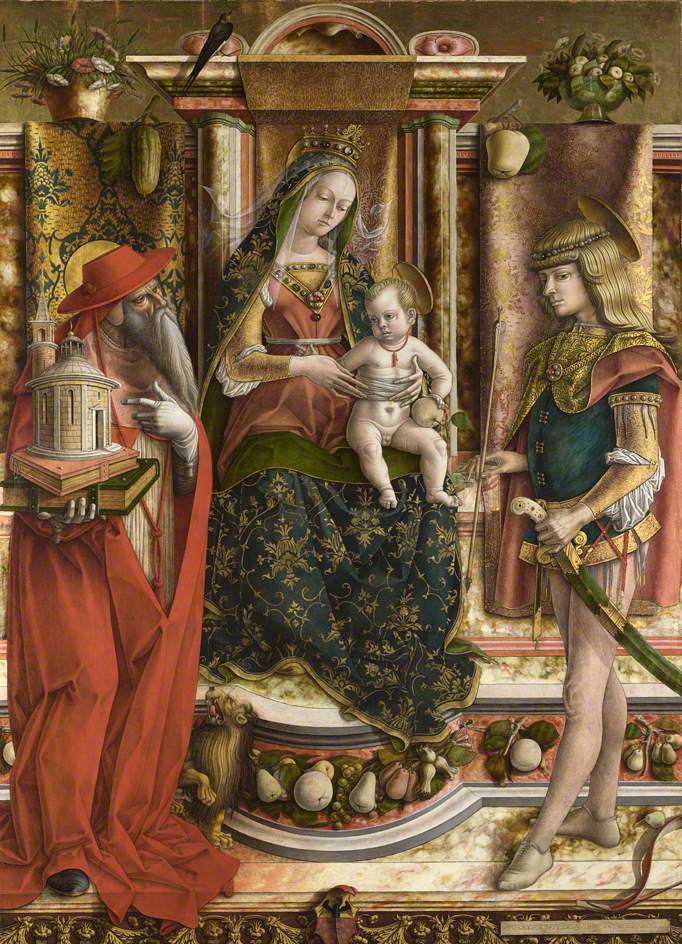
Decoding Symbols in Renaissance Art
Written by Ruchi Bhalla
Renaissance art is rich not only in terms of beauty, aesthetics and technique but also in terms of the colours and symbols that it carries, portraying an insightful visual language. There are some symbols that have held consistency in their meaning and make recurrent appearances in prominent masterpieces. The deeper you delve into the Renaissance art, the more intriguing and open to interpretation it becomes. The world of Renaissance art is the bridge between past, present and future, in order to understand it you have to become one with it, hence we will take a look at the secrets hidden to the uninitiated in them.
1. The Serpent
Snake is a spiritual symbol taken from the Bible. In Renaissance art, serpent was used to show the reason for the fall of mankind or something evil or Satan like. It draws from the story of Adam and Eve, when they were in Eden, a garden free from sin. However, on being tempted by the serpent, both eat from the tree of knowledge and are banished from Eden or paradise. Eve thereafter, becomes aware about her sexuality and nudity as soon as she takes a bite of the fruit. This has been beautifully depicted in the Elder, Adam and Eve where Eve poses in a sexually provocative manner with one leg resting on the tree while almost pushing the Apple to Adam, indicating women are the start of all evil, and the serpent looks on.
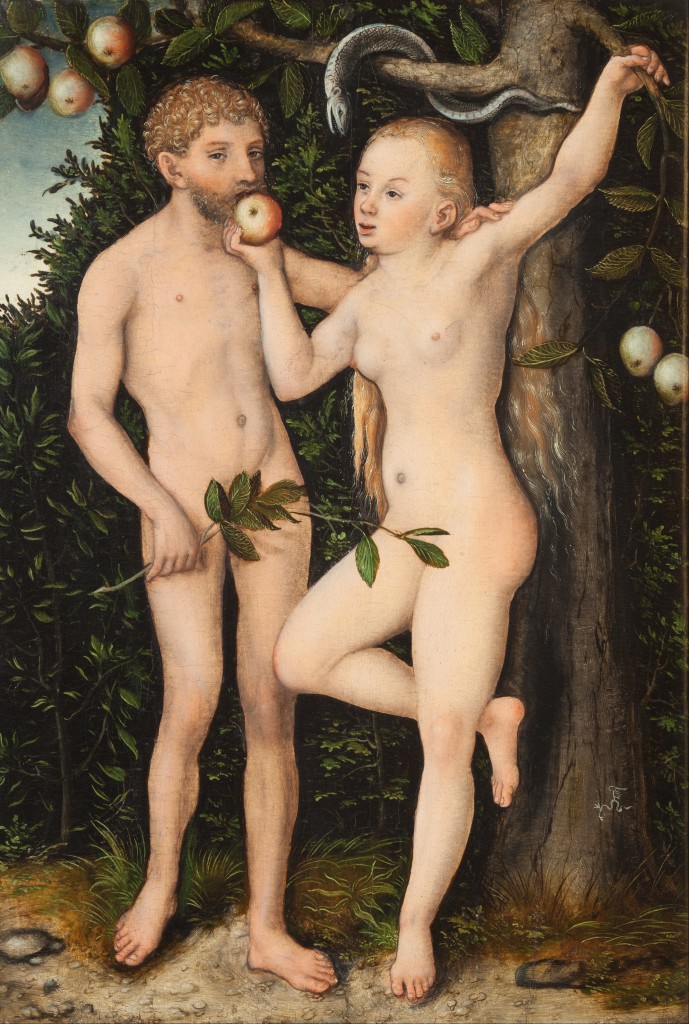
2. The Ermine
The best example to decipher the meaning of Ermine will be by using the reference of the famous painting The Lady Ermine. Ermine’s silky fur coat was used to make stoles. In relation to art it was often associated with royalty and also meant fidelity. It became a symbol of pregnancy and childbirth, suggesting that Cecilia Gallerani was probably pregnant with her lover Ludovicio’s child. It also features in the painting as a pun to Cecilia’s surname which also means Ermine in Greek.
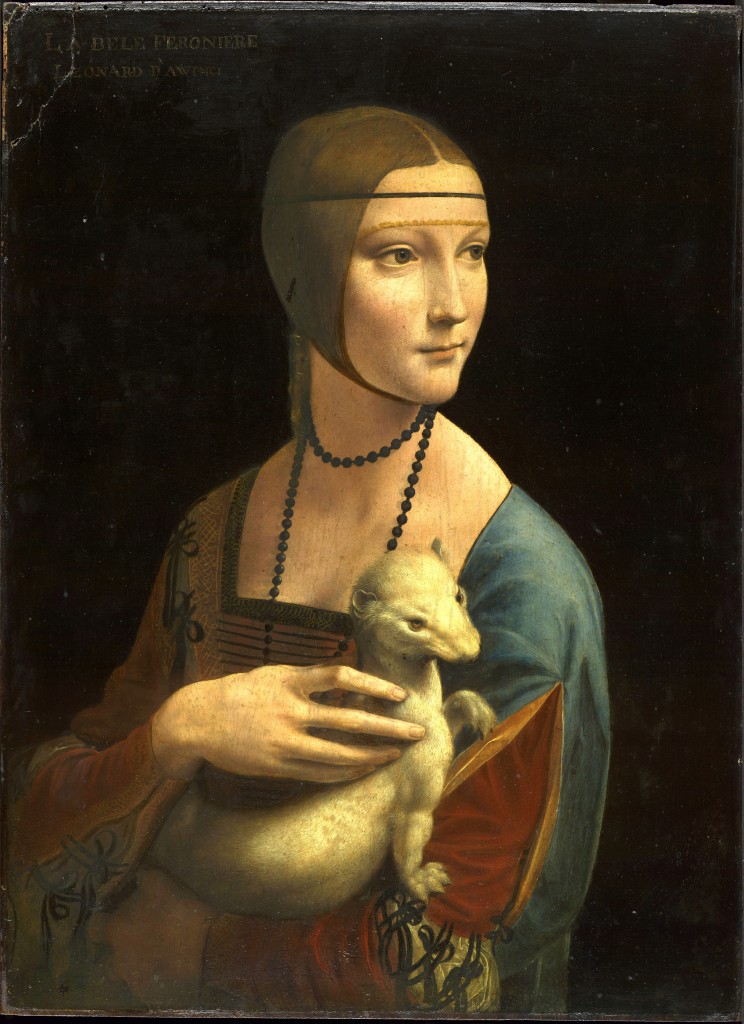
3. The Chalice
The main reason to use symbolism in art was to reach out to the mass which was largely illiterate and was enlightened through visual references to the Bible. Holy Chalice is the vessel which Jesus used at the Last Supper to serve the wine. The Chalice symbolises consecration and those who hold the chalice show that they have separated themselves from the evil and are truly god’s servants. The blood of the Redeemer by Giovanni Bellini shows Christ right after crucifixion, and a kneeling angel is catching his blood in a chalice.
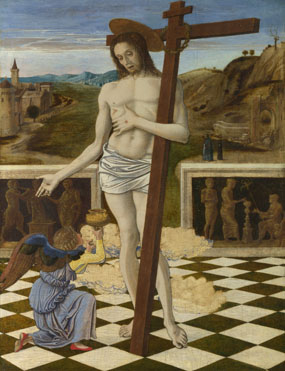
4. The swan
Swan in general symbolizes purity. Leda and the Swan by Leonardo Da Vinci is a painting that is now lost but whose many copies exist. It depicts Leda who is naked and is being seduced by Swan or Jupiter. The babies are shown to hatch out of eggs that she laid as a result of copulation between human and bird. Another version was done by Michelangelo which shows Leda in a reclining position was also destroyed. Even the peaceful composition Allegory of Music by Fillipino Lippi draws inspiration from Leda and the Swan.
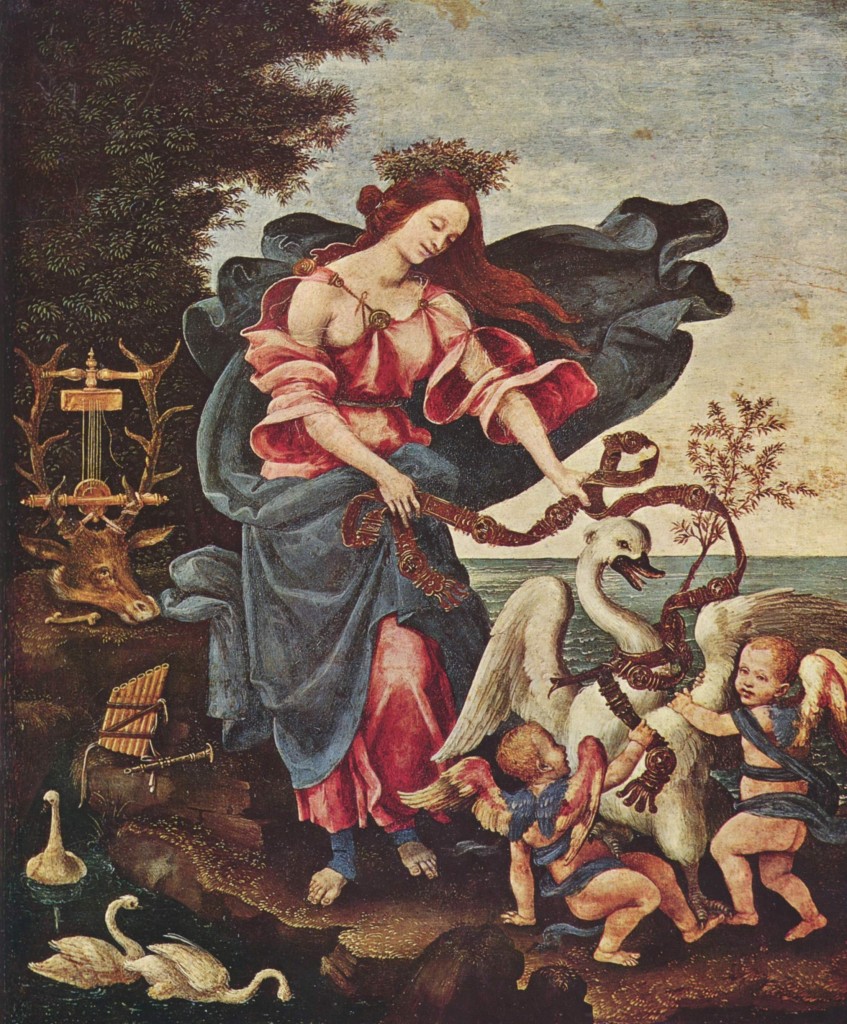
5. The Flowers
Botanical references are also very common in Renaissance art. Some references made to plants are drawn directly from the Bible, some from the literature which uses plants as metaphors (story of Narcissus who fell in love with his own reflection and was thus turned into the flower which bears his name till date); also the meaning is inspired from various herbs and their properties and purposes. Some of the meanings of the flowers are listed – Carnation in Greek means ‘flower of god’, Red carnation is the symbol of love (substitute for Rose), Pink Carnation as shown in Woman with a Pink , was a symbol of marriage, Cornflower as the enemy of snake, Blue colour of cornflower also represented heaven, Iris symbolizes divine message, trust and eloquence as well.

6. The Colours
All colours held different meanings. Reds always meant high social status, Orange was worn by middle ranked people, Yellows depicted prostitutes, Green symbolised youth, love and joy, Light blue was for women of marriageable age, White for purity, Browns were for religious dressings, Grey for peasants , Purple was again a rich colour as it was popularized by the Medici family which wore Purple. Most of the artists used to make their own brushes, and colours. Blue was the most expensive colour used in art as it was made from crushing the valuable gemstone Lapis Lazuli, it was usually used to depict Virgin Mary’s clothes or special parts of the paintings. The beautiful use of Blue in Girl with a Pearl Earring is remarkable.
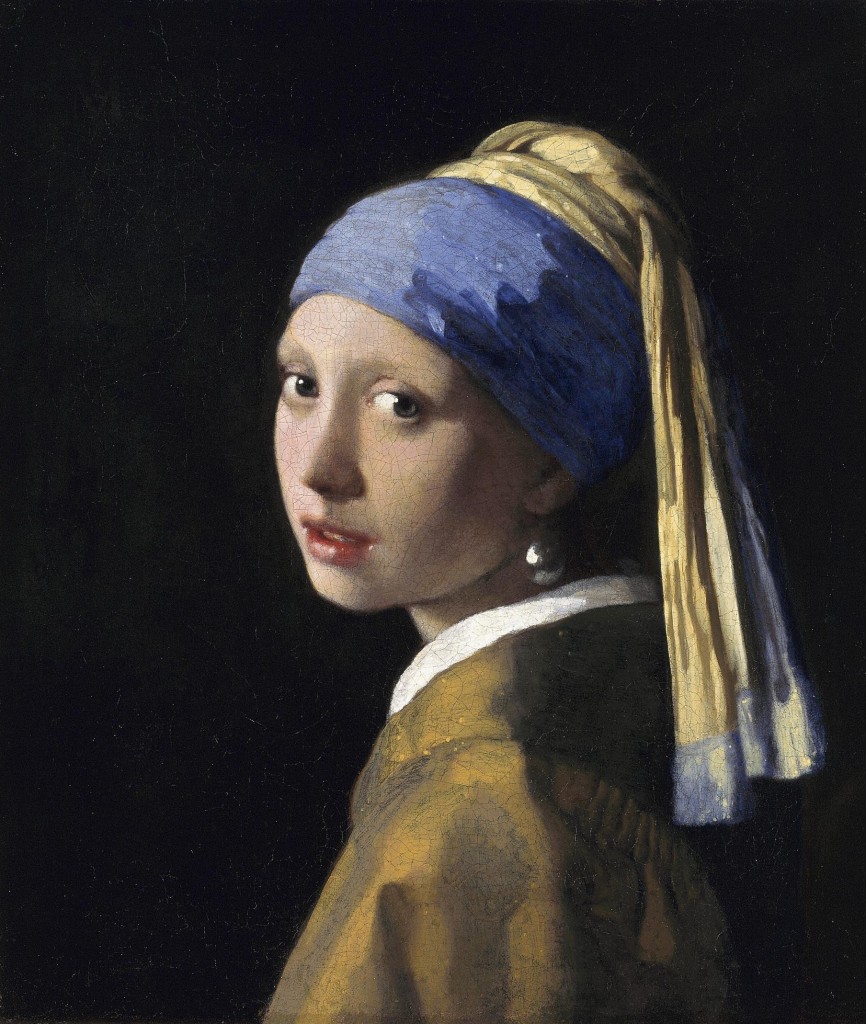
7. The Pentagon / Golden Mean / Golden Ratio
This particular proportion was considered as divine and mystic. The golden mean/ golden ratio was extensively used as it was thought to contribute beauty and aesthetic appeal to the paintings. It was perceived to be the secret of beauty. Leonardo Da Vinci’s Vitruvian Man, Mona Lisa and Michelangelo’s David are classic examples.
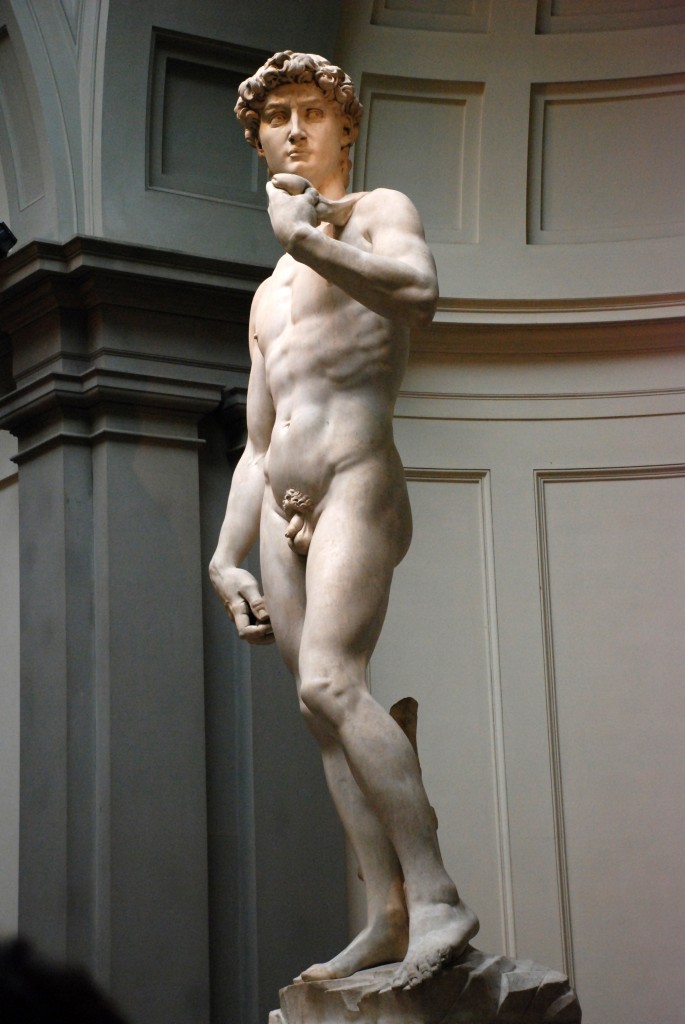
8. Holy Trinity
This implied the trinity of Father, Son and the Holy Spirit. The triangle thus became the stable shape for Trinity. The dispute on the Holy Sacrament by Raphael shows holy trinity as well as the Holy Trinity by Masaccio. The Last Supper by Leonardo Da Vinci is largely based on holy trinity, whether it is in defining the proportion of the table, or people sitting in groups of three, the three doors in the background, or the proportions of walls and windows, everything is in the proportion of three.
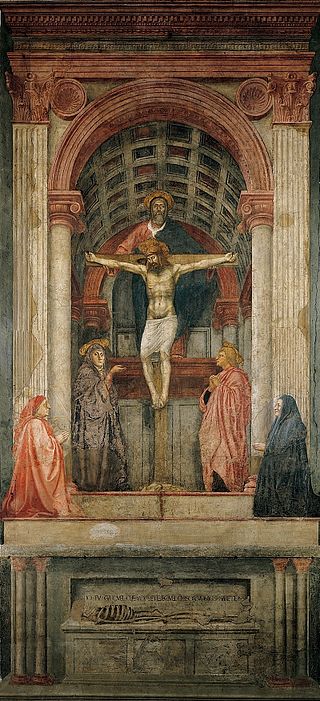
9. Putto / Putti (Plural)
These are the figures depicted as the nude male child, which can appear with wings or even without wings. Putti are not biblical angels, and usually represent non religious passion. Sometime a putto can represent cupid. Donatello is usually considered as the inventor of Putto. True meaning can be drawn only in the context of actual painting. For instance, if Putto appears along with Venus, then it can be termed as spirit of love, when Putto is behind the mask then it is called as Larvate, when Putto are shown playing in the background then they represent the dream like state of mind, musical Puttos playing instruments and dancing are the spirit of music.

10. Food
The symbolism for food has roots in classical literature. For instance, Pomegranate means desire, fertility and marriage, but can also mean resurrection and immortality in certain cases. A nut that has been halved appears symbolically close to holy trinity, as it has three parts, the outer case, a shell and the nut inside. An apple is synonymous with evil, because the word Malum for “apple” and “evil” in Latin is same. Pear is for incarnation. Gourd implies resurrection. Grapes are the symbol of Bacchus who is the god of wine, also because wine represents suffering of Christ as Jesus offered wine on the last supper to the apostles.
